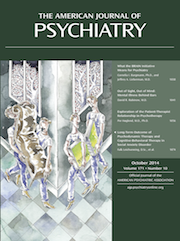The health and wellness issues of college students are of interest to a wide audience beyond the circumscribed readership of university mental health clinicians. Nearly 17.5 million young adults are matriculated in U.S. colleges. Therefore, many of us have personal or professional connections to a student. This book is written primarily for clinicians, both on and off campus, but its epidemiological chapters are also very informative for university administrators in charge of program planning. In addition, it makes for a terrific textbook for psychiatric residents on rotation in student health services.
The author, Doris Iarovici, is a psychiatrist at the Duke University Counseling and Psychological Services, an excellent vantage point for observing an increasingly diverse population on campus. She divides her book into two parts and an epilogue. In Part I, she describes the changing demographics of the current cohort of college students, their most important mental health concerns, and the role of psychiatry in the multidisciplinary staff of health professionals. Part II focuses on the clinical challenges particular to today’s students. In the epilogue, she sketches treatment models that will help us anticipate their needs in years to come.
Iarovici conceptualizes clinical problems through the lens of developmental psychology. Students can be mercurial: sometimes they present in very dramatic fashion and talk in hyperbole; at other times, they keep the most distressing symptoms under a cloak of secrecy. As a psychiatrist, it is crucial not to overreact in the first instance but to remain vigilant for risky behavior and for signs and symptoms of serious psychiatric conditions.
Writing a prescription for psychotropic medication is only one of many potential interventions. College psychiatrists have to stay nimble and adjust to the needs of a culturally and ethnically diverse cohort. It takes finesse and a certain temperament and, as Iarovici suggests, specialized training and experience to interact with this subset of highly educated patients and to differentiate developmental concerns from psychopathology.
I embarked on the reading of this book with great interest and was rewarded by the author’s thoughtful analysis of the literature and lively description of today’s students. Psychological developmental models beg to be reformulated to capture the experience of a generation of emerging adults who are digital natives from many different countries of the world. They stay connected through social networking sites and defy traditional psychological theories of individuation-separation.
Iarovici has a sophisticated understanding of the students’ ambivalent attitudes toward psychiatric treatment. They expect a pill to rapidly ameliorate their emotional distress and are hesitant to take a medication that “messes with my brain” for any length of time. They read up on effects and potential side effects online and like to engage staff in discussions about brain chemistry. Following Iarovici’s recommendations, psychiatrists best take a collaborative stance, transcend power struggles, and educate the student without patronizing.
The author enumerates the clinical syndromes most likely to interfere with the students’ academic and personal progress. For example, insomnia seems ubiquitous, and the resulting sleep deprivation is not a benign consequence. The completion of the semester can hang in the balance. Similarly, the abuse of alcohol and other drugs shape the college experience. It is hard to change cultural attitudes that are promoting binge drinking. Herbal marijuana has become 25 times as potent as the pot the students’ parents used to smoke. Loneliness and relationship problems rank high among students’ concerns. Romantic break-ups are normative, but young adults seem entirely unprepared for the intense emotional impact. The author identifies perfectionism and difficulties concentrating as frequent epithets describing the anguished student with academic performance problems. She addresses the public controversy surrounding the use and abuse of stimulant medications. In her opinion, many confounding factors contribute to attentional difficulties. The main culprits range from distraction by social media, digital technology, insufficient study skills, and lack of supervision and structure. College psychiatrists need to carefully screen for comorbid conditions when treating the 4%−8% of students diagnosed with attention deficit hyperactivity disorder. At the same time, we have an ethical obligation to minimize the nonmedical use and diversion of these potentially addictive compounds. Iarovici proposes concrete steps to improve diagnostic assessment and cites examples of guidelines and treatment contracts formulated by colleagues in different counseling services.
She draws our attention to disordered eating—a pattern that no longer affects just female students but has become prevalent among young men as well. Stress, anxiety, and depression are the most prevalent clinical issues and can accompany many of the aforementioned dilemmas.
Of particular concern are students suffering from moderate to serious psychiatric conditions necessitating medication treatment. They represent about one-quarter of all students seeking assistance in counseling services. Psychotic symptoms of heterogeneous etiology occur frequently among young adults, but the incidence of schizophrenia is rare.
Providing ambulatory and/or inpatient treatment for students with significant psychiatric issues poses a challenge. The author laments the understaffing of psychiatric services in many student health centers. At present, psychiatrists account for 5% of all professional counseling staff. Colleges have to expect an influx of so-called “nontraditional students” (e.g., undergraduates who are older than 18–24 years) without financial support from their parents and often encumbered by family obligations of their own. Iarovici sounds an appropriate alarm: as the demographics of the college population mimic the diversity of the general population, the prevalence of psychiatric conditions will rise accordingly.

